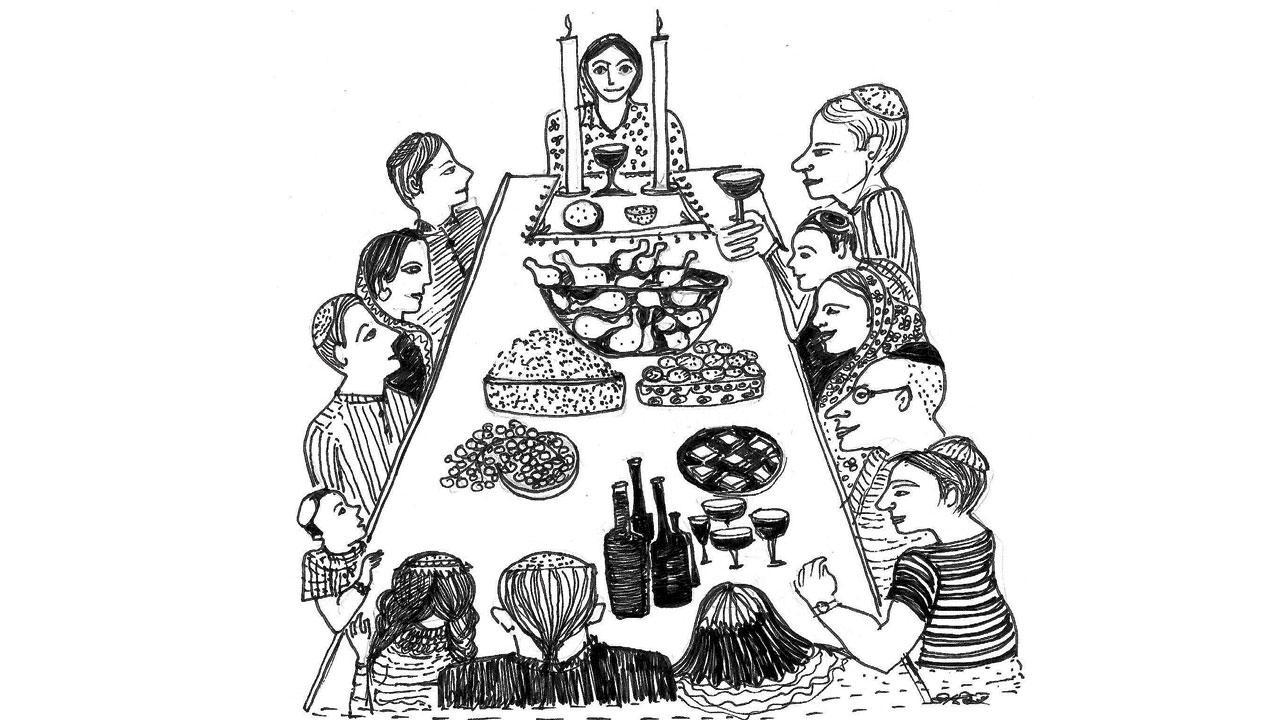A Paris trip had author Esther David realise how Indian Jewish food stood apart from that of Jews in the West, inspiring a book of recipes

Shabbath, a day of rest, is observed on the seventh day of the Jewish week. The woman of the house lights two candles every evening. Pics Courtesy/Harpercollins India
Food and memory, Esther David believes, are intertwined. To prove her point, she tells us how she stumbled upon an old bottle of saffron that, on opening, spread its fragrance all over her home, taking her on a nostalgic trip. “[It] brought back memories of my grandmother and how she hid it in a coin-size-box in various places around the house, using it sparingly for certain dishes. And, when I was seven, she forced me to cut frills around the ‘Kippur chi Puri,’ which is made to break the fast of Yom Kippur [Day of Atonement, in Judaism]. So, in most of my novels, which are based on Jewish life in India, these images often surfaced when I wanted to create a certain mood, like using a black sauce recipe to create a dark mood. But, with time, these traditional recipes disappeared from our table,” she says.
ADVERTISEMENT
Esther David. Pic/Pascal Monteil
In 2009, David’s Sahitya Akademi Award-winning novel Book of Rachel was translated into French, and she made a trip to Paris for the launch. It was at a Jewish New Year dinner party that she realised how Indian Jewish food was unlike the cuisine of the Jewish community in the West. It’s when she knew another book had to be written. Bene Appétit (HarperCollins India) that was released this month is dotted with illustrations by David, snippets of history and over a hundred traditional recipes.
The number of Jews in India has been dwindling; till 1940, their population was estimated at 50,000, and as of today, they stand at approximately 5,000. David travelled to acquaint herself with the culinary traditions of the five Jewish communities scattered across the country — from the south to the Northeast: The Bene Israelis, the Cochin Jews, the Baghdadi Jews, the Bene Ephraim Jews and the Bnei Menashe Jews. With Bene Appétit, David, who belongs to Bene Israel Jewish community of Ahmedabad, introduces readers to everything they need to know about Indian Jews, while capturing the joy food brings to communities by playing on the French salutation — in a way, she’s hoping her readers have a hearty meal after giving these recipes a go.
The book is dotted with illustrations by David, who is also an accomplished artist and sculptor.
The culinary methods of each Jewish community in India vary, but there are still commonalities. “Indian Jewish communities follow the ‘Dietary Law,’ which says, ‘Thou shall not cook the lamb in its mother’s milk.’ So, Jews do not mix milk with meat dishes and keep separate vessels for both. And, as a substitute to dairy products they use coconut milk to make curries and sweets. With meat dishes, Indian Jews prefer to end their meals with fruit and do not have milk-based sweets, like ‘mithai.’ In accordance with the dietary law, Indian Jews have fish with scales along with rice,” David informs. The writer also draws on her personal experiences.
The recipe for a dish called Tilkut Potatoes, for instance, was handed to her by her grandmother, Shebabeth. “Till she was with us, the dining table held a great attraction for me, during Shabbath, a malida or a festive meal; I remember many flavours like fish or chicken cooked in green masala curry. Most meals were made by the women of my family, as they laughed, joked and talked about the finer points of recipes. And, as the oil lamps or candles were lit, I felt that the dining table was the centre of my life,” she recalls.
David’s cause is to preserve the heritage for food, so she hopes these recipes find their way to digital avenues, too — though the real magic, of course, is in bringing them to life for all to savour.
Tilkut Potatoes
Ingredients
>> Potatoes – 7
>> Tilkut powder – 1 ¾ tablespoons
>> Onions – 2
>> Spring onions – 4
>> Oil – 1 cup
>> Whole sesame seeds for garnishing – 1 tablespoon
>> Salt to taste
Method
Peel the potatoes and slice. Heat oil in a heavy kadhai, in which sesame seeds are tempered. Add the potatoes and cook on a high flame. Stir continuously till the potatoes are half done, after which lower the flame and cover the kadhai. Cook the potatoes for another five to ten minutes. Then add sliced onions with tilkut powder, salt and chopped spring onions. Cover the kadhai once again and cook till done. Drain any excess oil and cook the potatoes for five more minutes till crisp. This dish is served hot with khichdi or chapattis or bread or with a plain dal-and-rice combination or with yogurt or yogurt-based kadhi and khichdi.
Optional
Tilkut potatoes can be made without spring onions but, if available, they give a fresh flavour to this recipe.
Note
For 7 potatoes, you need tilkut powder made with 1 tablespoon chilli powder and 3/4 teaspoon sesame seeds. And 1 tablespoon whole sesame seeds are used
for garnishing.
 Subscribe today by clicking the link and stay updated with the latest news!" Click here!
Subscribe today by clicking the link and stay updated with the latest news!" Click here!






